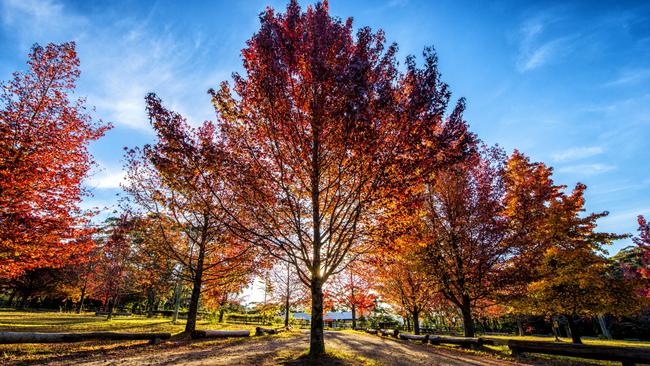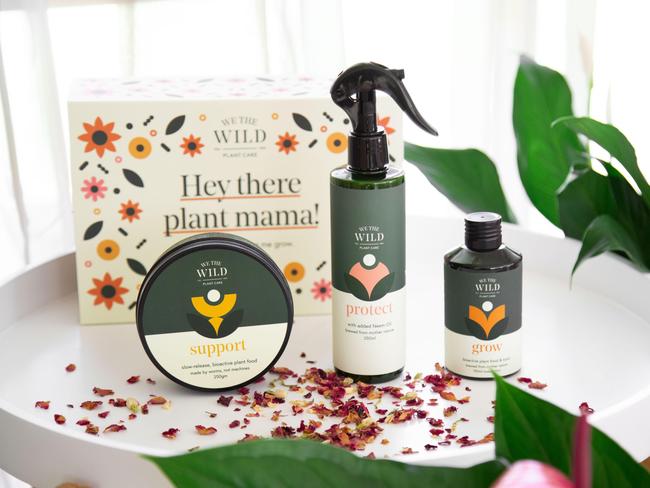Maples: a blaze of colour in autumn
Some of the most spectacular autumn trees are maples. The genus Acer has around 130 species, and thousands of cultivars.

Some of the most spectacular autumn trees are maples. The genus Acer has around 130 species, mostly from the northern hemisphere and mostly deciduous trees with attractive toothed or lobed leaves. The flowers tend to be insignificant but all maples have the distinctive two-winged fruit capsules that “helicopter” as they fall.
Maple syrup comes from a North American species, Acer saccharum; it’s also a valuable timber tree, and its leaf is the national symbol of Canada. The sweet sap is tapped from the trunks in spring and reduced to make syrup. They can reach 30m tall in the wild and along with A. rubrum, the red or Canadian maple, are an important part of the brilliant autumn displays seen in North America. In Australia, a hybrid between these two species called ‘Autumn Glory’ is one of Fleming’s Nurseries’ Lipstick range. Reaching 13m tall by 10m wide, it’s tough and adaptable, with intensely red leaves in autumn. Other Lipstick maples of similar size are ‘October Glory’ and ‘Fairview Flame’; their consistent shape makes them ideal for avenue plantings.
For small gardens, Japanese maples (A. palmatum) provide multiple options in terms of height, colour and style. There are more than a thousand cultivars bred from the original species; popular are ‘Atropurpureum’, to 4m with red-purple leaves in spring; ‘Red Pygmy’, a dwarf 2m-tall tree with narrow-lobed red to purple leaves; ‘Osakazuki’ (which has some of the best autumn colour); and ‘Sango-kaku’ (aka ‘Senkaki’), known for its glowing red bark in winter.
The most delicate foliage is on the many cultivars in the Dissectum Group, which have finely divided, lacy leaves; they’re mostly sold as weeping standards, grafted onto the top of a straight stem of A. palmatum. Their height stays much the same over time but the umbrella of foliage spreads out and down. They’re superb as a focal point in the garden and grow happily in large pots.
For narrow spaces, several columnar maples are available. One of my favourites is the paperbark maple (A. griseum), whose extraordinary shiny, cinnamon bark peels and curls away from the trunk, even on young trees. It provides winter interest to follow the autumn leaf colour. Small and slow growing, it’s one for the connoisseurs.
Q&A
To add “browns” to balance all the grass clippings in my compost, could I use shredded newspaper and old printed emails? Do the inks cause problems? Barry Powells, Coffs Harbour, NSW
Inks used in newspapers and magazines in Australia are safe. Ink and fibre residues from recycling processes meet EPA guidelines for biosolids applied to agricultural land. Levels of heavy metals or other toxins in de-inking sludges are well below levels of environmental concern. Copper levels from green and blue inks can be elevated but are comparable with other waste materials such as poultry manure.
Harlequin beetles are sucking the life out of our vegies, hedges and bottlebrush. Spraying diluted detergent on them when they sunbake seems ineffective. Is there a natural predator or elimination strategy? Darcy K, Bellbrae, Vic
Natural enemies are assassin bugs and birds. Registered controls are fairly toxic and not suitable for food plants. The shake (or tap) method is particularly effective for these bugs as their natural defence is to drop. Hold a container of soapy water below the plants as you tap the branches; the bugs will drop and drown. Regular repetition will rapidly reduce populations.

Send questions to: helenyoungtwig@gmail.com or Helen Young, PO Box 3098, Willoughby North, NSW 2068. helenyoung.com.au. The best question for May wins two gift boxes of organic plant care products from We The Wild, worth $100; wethewild.co.




To join the conversation, please log in. Don't have an account? Register
Join the conversation, you are commenting as Logout